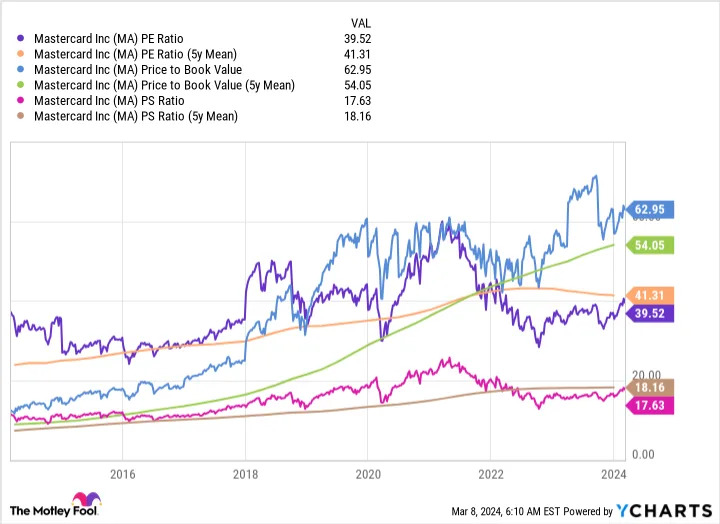When you say the name Visa (NYSE: V), the next name you think of is Mastercard (NYSE: MA), and vice versa. That’s because these two payment processors are the dominant players in their industry. Mastercard is the smaller of the two companies, but it is still a powerhouse. Investors have high expectations for it. Here’s a trio of reasons now might not be the best time to buy this finance industry heavyweight.
1. Mastercard has a target on its back
Every time a consumer uses a payment option that has the Mastercard logo on it, like a credit or debit card, Mastercard collects a transaction fee. Given that most people that use cards are simply trying to replace the need to carry cash, credit and debit cards get used a lot. Being the largest players, Mastercard and Visa — perhaps justifiably — come under a lot of government scrutiny. And the list doesn’t stop there; customers are also leery of the power these two companies wield.
For example, not too long ago retailers joined together in a class action lawsuit claiming that Mastercard and Visa improperly fixed credit and debit card fees. The settlement totaled a huge $5.6 billion. There’s already another lawsuit over the same issue, this time related to transactions processed on behalf of Block (NYSE: SQ). On the regulatory front, meanwhile, the Federal Trade Commission (FTC) slapped Mastercard on the wrist in late 2022, “ordering an end to illegal business tactics that Mastercard has been using to force merchants to route debit card payments through its payment network, and … requiring Mastercard to stop blocking the use of competing debit payment networks.” And that’s just one of many negative interactions with regulators in the U.S. and abroad.
Basically, Mastercard’s dominant industry position leads to frequent dustups with customers and regulators. If you like to keep things simple so you can sleep well at night, owning Mastercard could be a problem for you.
2. Mastercard’s valuation reflects its success
Still, Mastercard does have a strong industry position and it has expanded at a rapid clip. Furthermore, the dividend has been increased by a huge 28% per year on an annualized basis over the past decade. More recent dividend hikes have been lower than that figure, but still in the low double-digit percentages, which will be attractive to dividend growth investors. Backing those dividend boosts over the past decade was annualized revenue growth of 11.6% and annualized earnings growth of 16.5%.

These are great results, but Wall Street knows it. The stock’s price-to-sales ratio, price-to-earnings ratio, and price-to-book value ratio are all roughly in line with or above their five-year averages. The 0.5% dividend yield is about middle of the road over the past decade. While it might not be fair to say Mastercard’s stock is expensive, fully priced to a bit overpriced wouldn’t be an unreasonable view here. While it isn’t a bad thing to pay full price for a great company, the stock is no bargain.
3. Mastercard is economically sensitive
The last issue also affects point No. 2. The number of transactions that Mastercard processes tends to rise when the economy is strong and fall when the economy is weak. At the moment, there are increasing signs that consumers are worried about the economy, from Dollar Tree (NASDAQ: DLTR) seeing more high-income customers shopping at its stores to higher-end fashion brands, like Hugo Boss, warning that growth is slowing down.
If consumer activity is any indication, the economy may not be quite as strong as Wall Street thinks. If there’s an economic downturn, Mastercard’s performance — and likely its stock price — will be weak. Now may not be the best time to pay full price for this company.
Put Mastercard on your wish list
If you don’t like the headline risk from legal issues and regulator activity, Mastercard will probably never be a good fit for you. But it is a dominant player in an expanding industry. It will be attractive to a lot of investors, particularly those with a growth focus. But the stock appears fully priced and the economic backdrop seems like it could be a bit weaker than what Wall Street thinks. Right now this stock looks like it should be on most investors’ wish lists, not their buy lists. A sizable decline, however, might change that equation.

